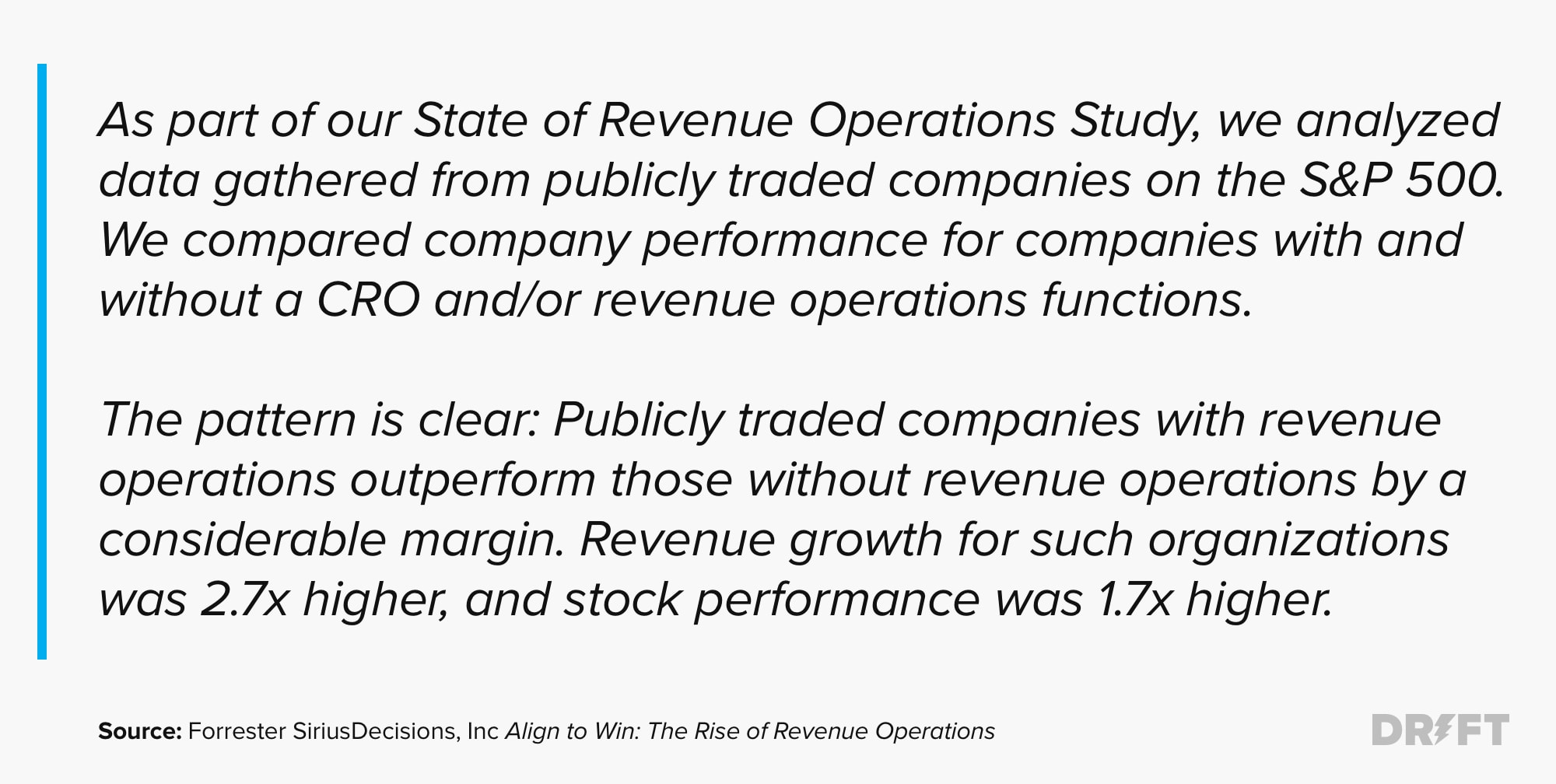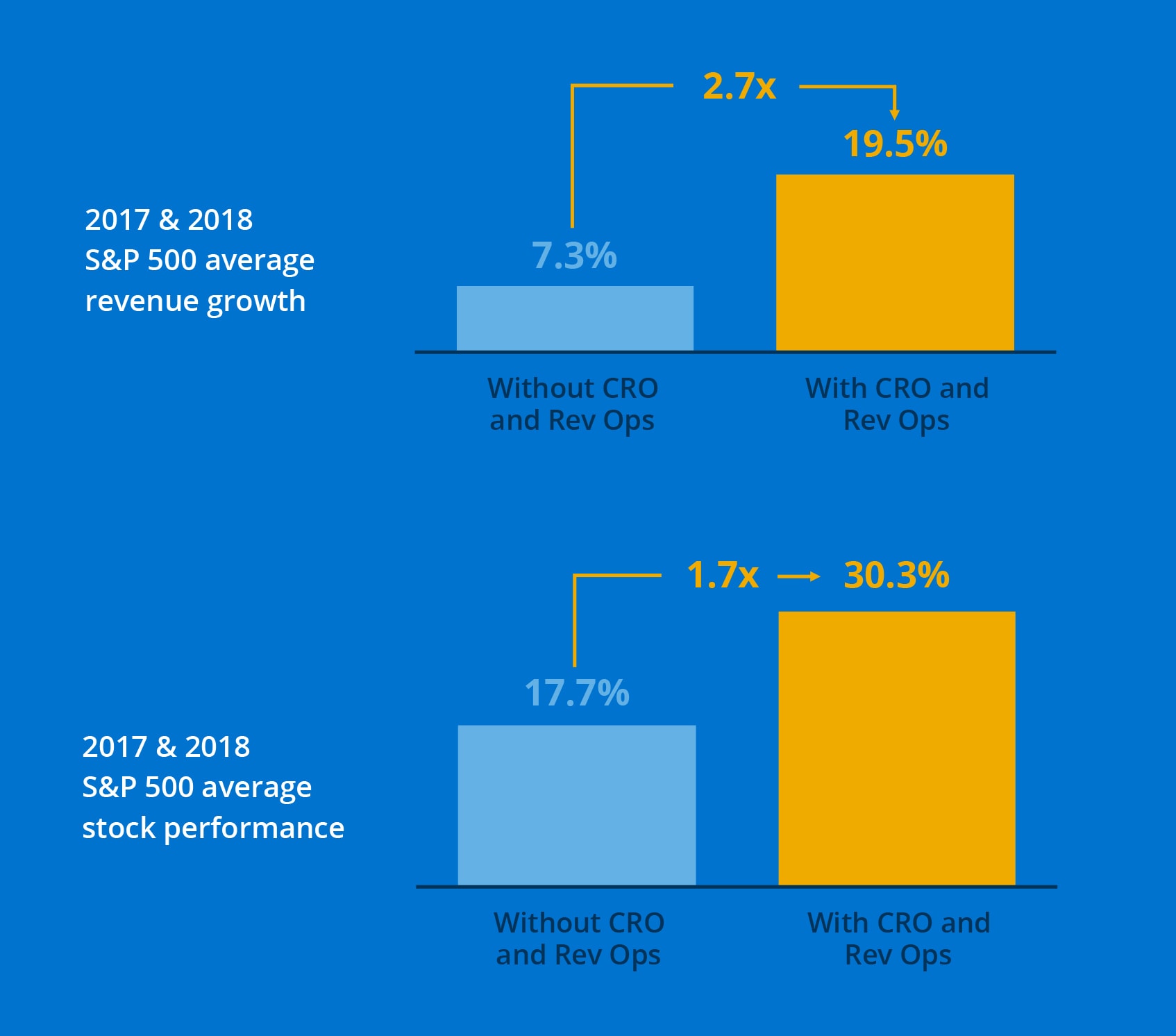When a concept is relatively new, it’s tempting to try to equate it with something familiar. That instinct, I think, is at the heart of why we’ve seen so many articles ruminating over whether revenue operations (or RevOps) is really just a fancy name for something that already exists.
As the first company to help put revenue operations to work within SaaS organizations, we’ve seen how the definition has evolved over the years, and where companies tackling revenue operations start to diverge in their messaging. As it becomes less of a novelty and more of a mainstay in the B2B industry, it’s time to cement the foundations of revenue operations, once and for all.
What Is Revenue Operations?
Revenue operations is a methodology for operating a business, designed to close gaps in the customer experience by breaking down internal silos that create friction felt by your customers. It does this by combining the go-to-market operations functions into a single unit that drives strategy for the business in a way that’s holistic and revenue-focused.
In practice, RevOps has many internal benefits. Who doesn’t want harmony between their GTM teams? However, it’s important to remember the real goal, which is to enable companies to provide a gap-free, personalized customer experience. Yes, it might make our jobs as operators easier, but that is just a welcome side effect.
Is Revenue Operations Just Another Word for Sales Operations?
The answer to this question is “no”, but I do understand the thinking behind it. Ironically, defining RevOps as “just another word for sales ops” illustrates one of the main issues that catalyzed this new way of operating in the first place.
For a long time, sales was seen as the only go-to-market function that purely generated revenue. Marketing was considered more of a cost center, and customer success was often ignored altogether. So, when a new methodology comes along with “revenue” in the name, the assumption is that it must be solely focused on sales.
In reality, being so laser-focused on sales alone is a big part of the problem. Not only does the sales cycle represent just a fraction of the full customer journey, but sales also isn’t getting anything done in a vacuum. Under revenue operations, marketing is increasingly responsible for generating pipeline, as well as providing invaluable support as a buyer moves through the funnel. Customer success, likewise, should be assigned responsibility for leveraging user data to expand existing accounts through cross-sell and up-sell, as well as preventing churn.
Though it might be tempting to dismiss this as semantics, having GTM teams who feel equal responsibility to revenue makes it easier for them to work together effectively to deliver a seamless experience to customers.
Why Is RevOps on the Rise?
There are a host of reasons why revenue operations and related job titles have become increasingly common. Chief among these is that buyers’ expectations have shifted, meaning that the way to set your company apart is through the experience you provide. Like B2C customers, B2B buyers want to feel like you understand them and their needs. This is why practices like ABM and conversational marketing have risen so meteorically in the industry; they are ways of getting to know the people you’re selling to, and applying that knowledge to deliver a fully personalized experience throughout their journey.
This also means that companies can no longer afford for their customers to feel the pain of clunky hand-offs between sales, marketing, and customer success – not if they want to win against the competition.
There’s so much complexity in B2B today, but the companies that will win are the ones who are not afraid to think progressively about operations. Centralizing operations is critical to removing friction for your customers at every step of their journey with your brand. Take it from Drift’s Will Collins 👇
I believe in centralized operations because, first and foremost, it creates a better experience for the customer. It also provides better visibility into company metrics and performance. If you intend to sell multiple products to multiple customer segments, I don’t know how you do that well without centralized operations.
– Will Collins, VP of Operations, Drift
Revenue operations facilitates a new org structure, where the go-to-market strategy is not siloed by department. In fact, Forrester SiriusDecisions found that the advantages of revenue operations don’t just end with the customer – there are added benefits for leaders as well.

This kind of alignment is the only way to truly deliver a seamless customer experience and increase LTV as a result.
The Roles and Functions of RevOps
There are four core skills that make up the revenue operations function: Strategy, tools, enablement, and insights. So, when we talk about the roles and functions within revenue operations, it’s important to also recognize another shift that will inform hiring done by companies making the transition to RevOps.
Instead of looking to hire a specialist to fill every need or skill gap, organizations should instead be on the hunt for generalists whose skills span across the above four skills. A successful RevOps team needs to be able to do the following for your business:
- Maintain go-to-market alignment
- Define processes
- Build a revenue roadmap
- Manage the entire tech stack
- Data stewardship
- Enablement
- Training
- Insights
- Reporting
Therefore, a team that possesses a more-or-less even balance of these skills is more valuable when it comes to solving problems for the business as a whole, as opposed to specialists who are only able to put out role-specific fires.
One more thing before I keep going. If you’re trying to build out a RevOps team but need to prove out your team’s dollar impact on the business first, I recommend this episode of Operations with yours truly 🎧
RevOps KPIs & Metrics
The goal of revenue operations is to close costly gaps in the customer experience, and the way we measure its success is by revenue impact. Rallying your entire organization around this shared metric of revenue will help with internal alignment, which will then translate into a more personalized, leak-free experience for your customers.
As for departmental KPIs, teams should be focused on momentum metrics that signify progress towards that ultimate revenue impact. This includes things like meetings booked, conversational marketing engagement, content downloads, and webinar attendance.
To give you an idea of the kind of impact we’re talking about, let’s consider a recent study from Forrester SiriusDecisions 👀

Or if you’re more of a visual learner, check out this graphic that shows the impact that revenue operations can have:

Are you convinced yet?
The Future of Revenue Operations
Much like with account-based marketing and conversational marketing, the future of revenue operations is pretty much guaranteed. As the methodology has taken shape within the industry, it’s become clear that this is the way forward for business operations. The demand for a personalized customer experience is not going anywhere – and it will continue to push B2B companies to better understand their customers’ needs and innovate upon ways to meet them.
Go Nimbly’s VP of Marketing, Lorena Morales, had this to say about the staying power of RevOps, and how it goes hand-in-hand with conversational marketing (which also isn’t likely to go anywhere):
I believe RevOps and conversational marketing are heavily connected, as it is now sales and marketing working together to create RELATIONSHIPS throughout the entire customer journey. We didn’t have that complicity before.
One essential piece of RevOps is killing handoffs and that’s exactly what tools like Drift have allowed us to do, from TOFU leads and accounts all the way to client advocacy.
The same way sales depends on successful flows in a CM platform to relate in a HUMAN way to buyers, marketers depend on SDRs (or AEs) for execution; both are equally important. The days when one department was more accountable for revenue than the other are gone for good. That is RevOps.
– Lorena Morales, VP of Marketing, Go Nimbly
If you want to be truly customer-obsessed, your digital efforts need to start and end with the customer. That means tapping into the combined power of revenue operations and conversational marketing ⚡︎
Jason Reichl is the co-founder and CEO of Go Nimbly, a Drift Partner that helps SaaS companies break down the silos that happen naturally with growth.






